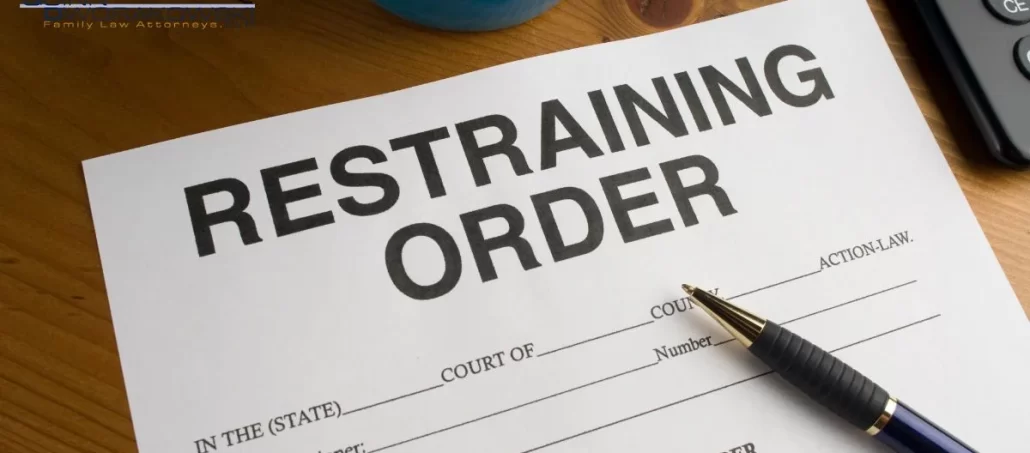No-Contact Order vs. Restraining Order in California: What’s the Difference?


When navigating legal protections against harassment, abuse, or threats, understanding the difference between a no-contact order vs. a restraining order in California is crucial. Both orders serve to protect individuals, but they function differently and are issued under different circumstances. Knowing which type of order applies to your situation can significantly impact your safety and legal strategy.
What Is a No-Contact Order?
A no-contact order is formally issued in criminal cases as a condition of bail, probation, or parole. It requires the defendant to refrain from contacting the victim by any means, such as in person, over the phone, text, email, social media, or a third person.
No-contact orders are often required in domestic violence, stalking, harassment, and sexual assault cases, in part to prevent the defendant from intimidating or influencing the victim during the pendency of prosecution. Once a no-contact order has been issued, it usually remains in place until the case is resolved.
Violating a no-contact order is a serious allegation with severe consequences, such as additional criminal charges, revocation of bail, or increased punishment.
What Is a Restraining Order?
A restraining order, sometimes called a protective order, is a civil court order meant to protect one person from abuse, harassment, stalking, or threats that aren’t intrinsically criminal in nature. Unlike no-contact orders described above, one can obtain a restraining order in California without any corresponding criminal proceedings.
California has six kinds of restraining orders:
- Elder Abuse Restraining Order (EARO)
- Civil Harassment Restraining Order (CHRO)
- Workplace Violence Restraining Order (WVRO)
- Domestic Violence Restraining Order (DVRO)
- Gun Violence Restraining Order (GVRO)
- School Violence Restraining Order (SVRO)
To get a restraining order, the person requesting protection files paperwork that explains why they want protection, and a judge may then provide a protective order for that person against a hostile individual. After considering the motion, a court could grant a temporary restraining order (TRO) if there is an imminent risk.
Later on, a final determination will be made about the granting of a permanent order. Restraining orders have the power to prohibit communication between parties, keep them apart and, in extremely unusual circumstances, direct parties to execute certain actions when a third party (such as a police officer) is present. There are protective features in many restraining orders.
Key Differences Between No-Contact Orders and Restraining Orders
Although they are similar, there are specific differences between no-contact orders and restraining orders:
- Issuing Authority: No-contact orders are issued in criminal court as part of a criminal case while restraining orders are issued in civil court and can be independent of any criminal proceedings.
- Initiation: No-contact orders are typically initiated by law enforcement or the prosecutor, whereas restraining orders are initiated by the individual seeking protection.
- Duration: The duration of no-contact orders usually aligns with the length of the criminal case or the terms of probation/parole. Restraining orders can last from a few weeks to several years, depending on the type of order and the circumstances of the case.
- Scope: Restraining orders can include broader protections, such as custody arrangements, property control, and specific conduct prohibitions, beyond just preventing contact.
Enforcement and Penalties for Violating Orders
No-contact orders and restraining orders are aggressively enforced in California. Any violation of these orders is a serious crime and can lead to jail time and other consequences. Law enforcement officers can arrest on sight, without a warrant, if they have probable cause to believe that an order has been violated.
Besides resulting in criminal penalties, a victim may also file a civil contempt action against a violator. This can lead to further consequences, such as fines and imprisonment. These state or court orders help protect victims and maintain public confidence in the judicial system. If an order is broken after receiving it, the victim has to report it to the police right away. They should also keep a record of all the instances so that enforcement actions can be taken.
FAQs
Q: How Long Is a Temporary Restraining Order in California?
A: In California, a temporary restraining order (TRO) normally lasts until the court hearing for the permanent order, which is usually set within 20 to 25 days of the time when the TRO was issued. This is so that the court can have enough time to consider the facts and issues before deciding whether issuing a longer-term order is appropriate.
Q: How Long Do No-Contact Orders Last in California?
A: No-contact orders issued in California often continue for the duration of the criminal case, including any probation or parole that may be imposed if the defendant is convicted. A no-contact order can be modified or extended throughout the case, as well as at the judge’s discretion, to allow for the protection of the victim during the criminal process.
Q: What Is the Difference Between a No-Contact Order and a Restraining Order in CA?
A: The main difference between a no-contact order and a restraining order is who issues the order and what kind of effects each order has. No-contact orders are issued in criminal cases to prevent the defendant from harassing, attacking, or annoying the victim. Restraining orders are civil orders. Any person can apply for a restraining order to prevent harassing, abusive, or threatening behavior, regardless of a criminal case.
Q: Does a Restraining Order Show Up on a Background Check in California?
A: Yes, a restraining order will show up on a vast majority of standard background checks in California. Restraining orders can appear on every standard public records search as well as on the California statewide domestic violence registry. This information is accessible to police agencies, social services, potential employers for hiring, or other background checks regarding housing, employment, or licensing.
Contact a California Restraining Order Attorney
For efficient legal protection, it is essential to comprehend the distinctions between California’s no-contact orders and restraining orders. Both provide personal protection, but they do it in distinct ways. Make an appointment for a consultation with our knowledgeable legal team for individualized advice and support. Our attorneys at Quinn & Dworakowski, LLP, are ready to assist you in navigating the complexities of these legal protections.



